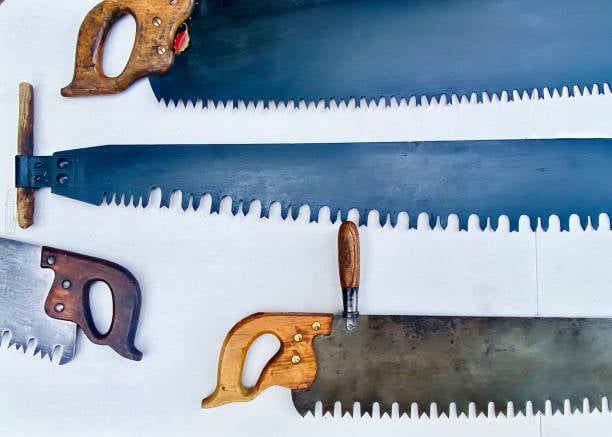Understanding the Distinctions Between Wood and Metal Jigsaw Blades
Jigsaw blades are an essential tool for cutting through various materials, including wood and metal. However, not all jigsaw blades are created equal, and it's crucial to understand the differences between wood and metal jigsaw blades to ensure optimal performance and safety. In this article, we will delve into the distinct characteristics, applications, and considerations associated with these two types of jigsaw blades.
The Anatomy of Wood Jigsaw Blades
Wood jigsaw blades are specifically designed to cut through different types of wood, ranging from softwoods like pine to hardwoods like oak. These blades typically feature a larger tooth pitch and fewer teeth per inch (TPI) compared to metal jigsaw blades. The tooth pitch refers to the distance between the teeth, and a larger pitch allows for faster cutting but with a rougher finish.
Wood jigsaw blades often have wider gullets or spaces between the teeth, enabling efficient chip removal during cutting. This feature helps prevent clogging and overheating of the blade, allowing for smoother and more accurate cuts. Additionally, wood blades are generally thinner and more flexible compared to metal blades, enabling greater maneuverability and curvilinear cutting.
The Composition of Metal Jigsaw Blades
Metal jigsaw blades are specifically engineered to cut through various metals, such as steel, aluminum, and copper. These blades are typically made from high-speed steel (HSS) or bi-metal materials, which offer enhanced durability and heat resistance. Unlike wood blades, metal jigsaw blades have a smaller tooth pitch and a higher TPI to ensure precise and clean cuts on metal surfaces.
The smaller tooth pitch allows for a greater number of teeth to engage with the material, resulting in smoother and more controlled cutting. Metal jigsaw blades also tend to have narrower gullets to reduce chip size and facilitate effective chip evacuation during cutting. The rigidity of metal blades is essential to withstand the high cutting forces exerted on them while maintaining accuracy and minimizing blade deflection.
Applications of Wood Jigsaw Blades
Wood jigsaw blades are primarily used for cutting wood materials, including solid wood, plywood, and particleboard. The coarse tooth pitch and wider gullets make these blades ideal for fast and rough cuts, such as when cutting along the grain or making rough-shaped cuts.
Wood jigsaw blades are commonly employed in woodworking projects, such as creating intricate designs, cutting curves, shaping furniture pieces, or making precise straight cuts. These blades are also suitable for cutting plastic materials, laminate, and certain non-ferrous metals with low hardness.
Applications of Metal Jigsaw Blades
Metal jigsaw blades are specifically designed for cutting through a wide range of metals, including steel, aluminum, and copper. These blades excel at creating clean, burr-free cuts on metal surfaces, making them ideal for metalworking projects, plumbing tasks, automotive repairs, and other applications where precise cutting is necessary.
Metal jigsaw blades are also suitable for cutting plastic pipes, fiberglass, and other non-metallic materials. However, due to their tooth geometry and tooth pitch, metal blades may cause more chip clogging and generate more heat when used on these materials compared to wood blades.
Choosing the Right Blade for the Job
When selecting between wood and metal jigsaw blades, it is essential to consider the specific requirements of your project. Factors such as the material to be cut, desired cutting speed, surface finish, and blade durability should be taken into account.
If you intend to cut wood or wood-like materials, opting for wood jigsaw blades would be the most suitable choice. On the other hand, if your project involves cutting through metals or non-ferrous materials, metal jigsaw blades are the recommended option.
It is worth noting that there are universal jigsaw blades available, which are versatile and can handle both wood and metal cutting tasks to a certain extent. However, for optimal results and longevity of the blades, using dedicated wood or metal jigsaw blades is generally preferred.
Proper Handling and Safety Considerations
Regardless of whether you are using wood or metal jigsaw blades, it is crucial to handle them with care and prioritize safety. Always wear appropriate personal protective equipment, such as safety goggles and gloves, to protect yourself from potential hazards.
Ensure that the jigsaw blade is securely and correctly installed in the jigsaw machine before starting any cutting operation. Follow the manufacturer's guidelines and recommendations for blade installation and adjustment. Regularly inspect the blades for any signs of wear or damage and replace them as needed to maintain optimal performance and prevent accidents.
Conclusion
Understanding the differences between wood and metal jigsaw blades is essential for selecting the right tool for your cutting needs. Wood blades are designed for fast and rough cuts on wood materials, while metal blades excel at creating clean and precise cuts on various metals. By choosing the appropriate blade and following proper handling and safety measures, you can achieve optimal cutting results and enhance your overall project outcomes.


